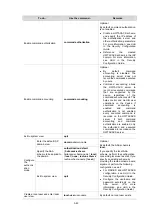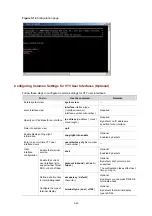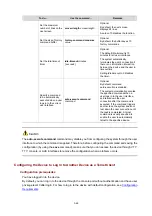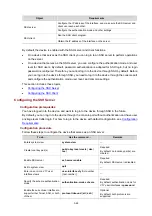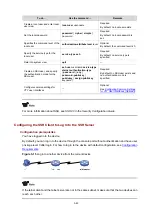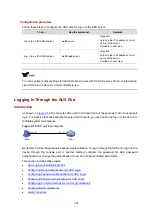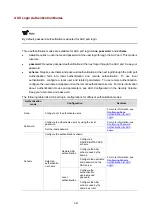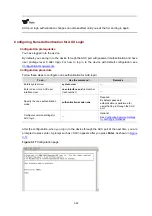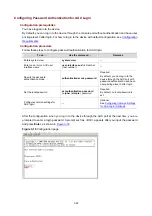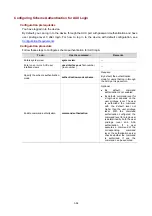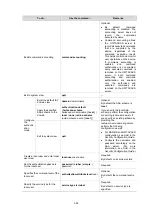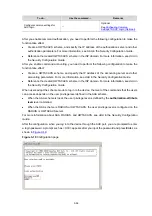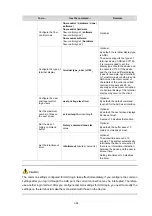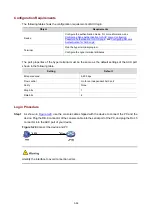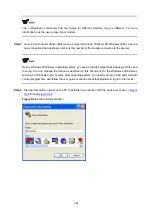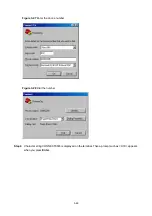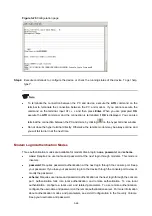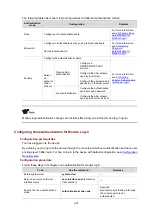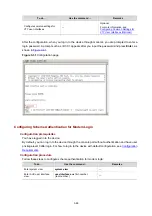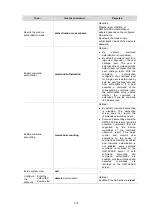
3-56
To do…
Use the command…
Remarks
Configure common settings for
AUX login
—
Optional
Settings for AUX Login (Optional)
After you enable command authorization, you need to perform the following configuration to make the
function take effect:
z
Create a HWTACACS scheme, and specify the IP address of the authorization server and other
authorization parameters. For more information, see AAA in the Security Configuration Guide.
z
Reference the created HWTACACS scheme in the ISP domain. For more information, see
AAA
in
the
Security Configuration Guide
.
After you enable command accounting, you need to perform the following configuration to make the
function take effect:
z
Create a HWTACACS scheme, and specify the IP address of the accounting server and other
accounting parameters. For more information, see
AAA
in the
Security Configuration Guide
.
z
Reference the created HWTACACS scheme in the ISP domain. For more information, see
AAA
in
the
Security Configuration Guide
.
When users adopt the scheme mode to log in to the device, the level of the commands that the users
can access depends on the user privilege level defined in the AAA scheme.
z
When the AAA scheme is local, the user privilege level is defined by the
authorization-attribute
level level
command.
z
When the AAA scheme is RADIUS or HWTACACS, the user privilege level is configured on the
RADIUS or HWTACACS server.
For more information about AAA, RADIUS, and HWTACACS, see
AAA
in the
Security Configuration
Guide
.
After the configuration, when you log in to the device through the AUX port, you are prompted to enter
a login password. A prompt such as <H3C> appears after you input the password and press
Enter
, as
shown in
Figure 3-19
Configuration page


